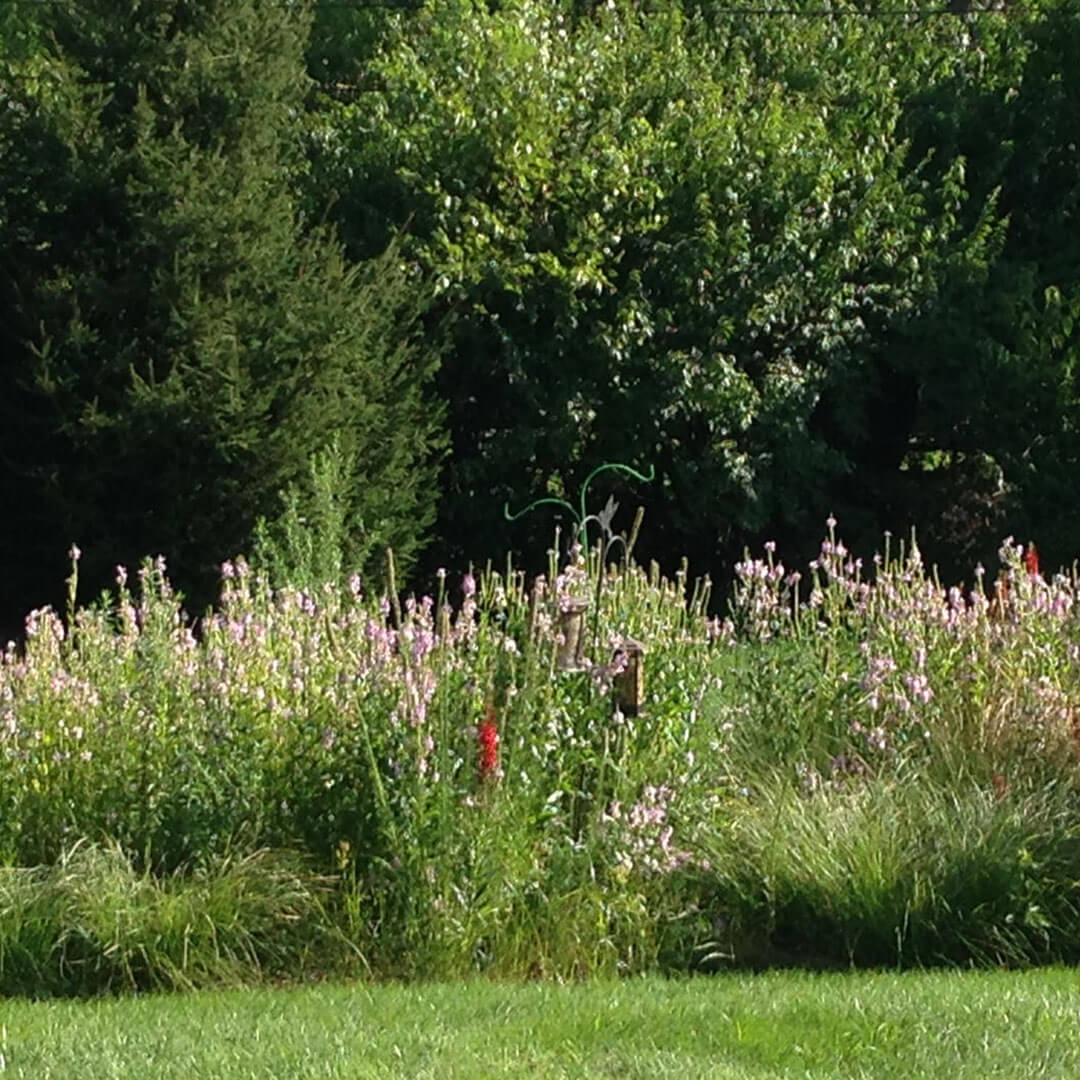Sometimes, when it rains, it pours, especially when it comes to spring and summer rains in St Louis. While great for lush green grass and healthy plants, if you have low-lying areas on your property, you probably have a love/hate relationship with heavy summer rains. Even the most level of yards can only absorb so much water, and, depending on the soil composition, flooding and pooling can happen quickly. Impervious landscaping, or areas where water is not absorbed, such as parking areas, streets, and buildings, also contribute to creating water problems on a property.
Aesthetically pleasing and environmentally responsible, rain gardens are a great way to combat stormwater issues on both residential and commercial properties. Because they can fit easily into an existing landscape plan, curb, median, or cul de sac, rain gardens are a non-invasive way of managing stormwater into greenspaces. Because they are so effective at absorbing and treating runoff, they are also considered a best management practice in many municipalities for stormwater in and around new developments.

RESIDENTIAL RAIN GARDEN INSTALLATIONS
Starting a residential landscaping plan from scratch presents an excellent opportunity to incorporate a rain garden, but they can also be added to an existing garden and landscape design to beautiful effect. Perhaps one of the most well-known reasons for building a rain garden is that, with the right plants, such as Missouri native plants, and base materials, they help manage pollution by absorbing and filtering rainwater as it washes from gutters or across parking areas. However, there are many other benefits that come from adding a rain garden to your residential landscape design, which is making them an increasingly popular choice for homeowners.
By diverting and containing rain water as it moves around your home and through your landscaping, rain gardens can help prevent erosive damage to the rest of your lawn. They also can help prevent damage to other structures on your property by helping to keep water from pooling at the bases of hardscaping and foundations. Designed to absorb moisture within 48 hours of a rainfall, a rain garden is an excellent tool for preventing those mosquitoes who love to take up residence in standing water.
COMMERCIAL & MUNICIPAL RAIN GARDENS
A rain garden in a commercial or municipal space, commonly referred to as bioretention, relies on a fine-tuned set of materials and plantings to help manage a number of issues that come with more extensive developments with vast stretches of impermeable surfaces. Think about the parking lots outside a store or median plantings along stretches of highly trafficked byways. We partner with commercial and residential builders to design and install custom bioretention plans on the properties they are developing, all designed to be attractive and meet the requirements of the sewer department where they are building. In fact, you may drive by one every day and not even realize all of the hard work it is doing to filter out the dirt, gas, oil, and more that gets washed off the roadways during a heavy rainstorm.
At Frisella Landscape Group, we have worked with several commercial and residential builders to help them incorporate stormwater management systems into their landscape design. Contact our team to learn more about how we can help you create a responsible, beautiful rainwater management system for your home or business.

